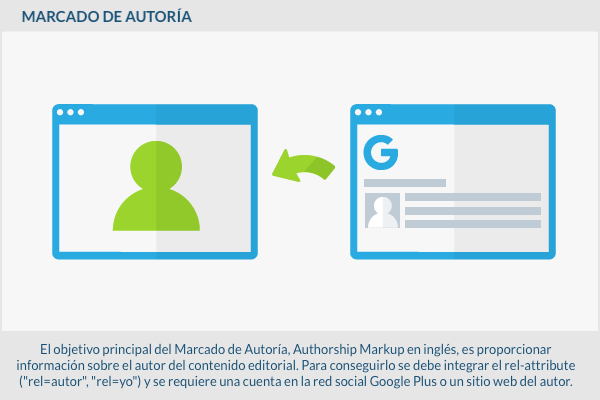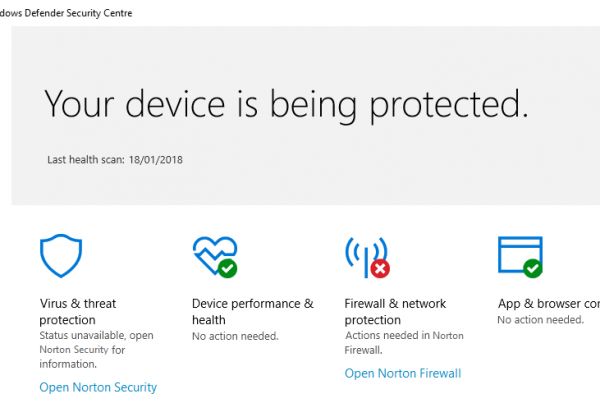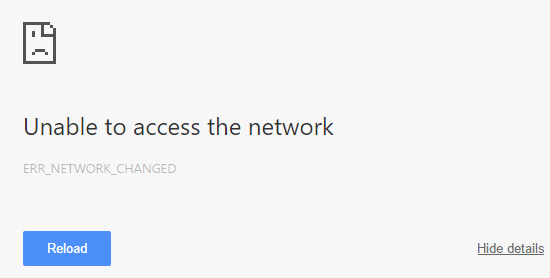The main objective of Authorship Marking, Authorship Markup in English, is to provide information about the author of the editorial content. To achieve this, the rel-attribute ("Rel = author", "rel = me") and requires an account on the Google Plus social network or an author's web portal. Since the end of August 2014, Google has discouraged the use of authorship markup and information regarding the author no longer appears in search engine results - SERPs.
Definition
Search engines invented the authorship marking to assign web content to a specific author. In theory, this should increase the trust of the web portal and the status of the author, “Author-Rank”. The authorship markup had an immediate impact on the Snippets since the author's Google Plus profile was linked directly to the snippet and, in this way, the reader could find the author of a post with just one click.
At first, Google not only established a direct link to the author's profile in the snippets, but also displayed and linked profile photos that had been downloaded by the author.
Through a comment in the Google Plus search engine on June 25, 2014, John Müller, representing Google, announced that the profile photo would not appear in the search snippet or in the Google news. In the same comment, Müller mentioned that Google did not contemplate any difference in the results of the Percentage of Clicks - CTR of the snippets that contained a photo, with those that did not. On August 28, 2014, Google updated the inclusion of authorship in snippets. In spite of everything, John Müller mentioned that same day, through a comment in the Google Plus search engine, that this would not be the end of his efforts to obtain a correct content authority assignment. Google's argument for removing authorship markup in snippets is based on the fact that profile photos may distract the user's attention too much from Google Adwords ads.
Müller noted in another comment:
“We have found through our own analysis that de-authorship does not appear to reduce website traffic and incorporating it does not increase the number of clicks on ads. We make these types of changes in order to improve the experience of our users. "
At the same time, Müller confirmed that showing the author's profile photo could even generate a bad user experience in the SERPs since they tended to choose the photo thinking that it would redirect them to the post. In spite of everything, by selecting the photo, the user appeared on the author's Google Plus profile and, thus, lost interest in the post. This was a disadvantage not only for the post but also for the social network.
Incorporation in the past
To identify the author of a post in search engines, an account in the Google Plus search engine and a web portal with information about the author were required. Search engines required two items:
- A link from the GooglePlus profile to the content
- A link back from the content to the GooglePlus profile
The following was used rel-attribute for the authorship marking: rel = »author» or rel = »me»
Determine a connection
Authors could link their content to the author's web portal and also to their Google Plus account. The authorship marking it functioned as a seal of trust.
The author's web portal was written with:
<a rel="author" href="https://es.ryte.com/autoren/serpino">Prof. Serpino</a>
And the account in the Google Plus search engine:
<a rel="author" href="https://profiles.google.com/12345678901112131415">Prof. Serpino</a>
The author's web portal
The authors could also create content for other websites. To communicate to search engines that all content came from the same author, the rel = "me" was used. For example, Professor Serpino usually writes in www.profexample.com.
The link www.profexample.com for your home page (Serpino.de) it would appear as follows:
<a rel="me" href="http://www.serpino.com">More on Prof. Serpino</a>
At the same time, Serpino should show a direct link back to
http://prof.example.com
Therefore, the reciprocal factor rel = "me" warns search engines that the person at serpin.com and example.com/authors/serpino are the same person.
Possible new features
It seems that Google remains interested in linking the author to the content in the future since, in the long term, it is essential for the user to know if a source is trustworthy or not. For now, readers should take it upon themselves to verify this and focus on large-scale online media to make sure the content is trustworthy. Today, there are already numerous possibilities to declare one's identity using markup language. It seems that, for the moment, Google's efforts to create the need to use its own social networks for the identification of the authors have failed.
Web links
- Authorship in web search support.google.com






